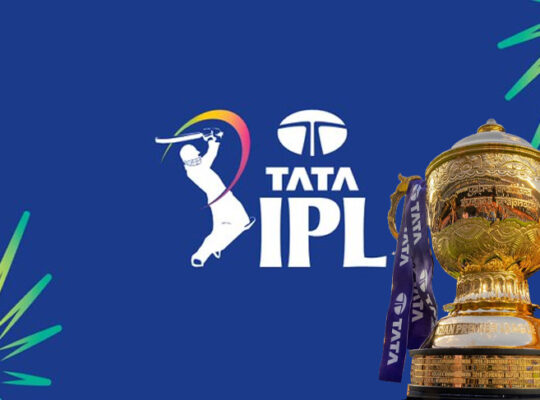In the world of Blackjack, few skills are as underrated yet as impactful as basic math. While many associate blackjack success with luck or card counting, it is, in fact, the ability to perform simple mathematical calculations that consistently separates amateur players from skilled ones. Understanding probabilities, expected value, and optimal strategies built on math will not only improve your win rate but also minimize losses and increase your confidence at the table.
The Crucial Role of Mathematics in Blackjack
At its core, Blackjack is a game driven by probabilities and numbers. Every decision a player makes is based on the statistical likelihood of certain outcomes. Whether it’s choosing to hit, stand, double down, or split, the optimal choice is always rooted in math.
Understanding basic arithmetic enables players to:
- Calculate the odds of busting
- Estimate the dealer’s likelihood of busting
- Assess the advantage of doubling down
- Make accurate split decisions
- Follow basic strategy charts effectively
Players who neglect math often rely on gut feelings, which can be costly in the long run. On the contrary, those who master simple mathematical principles consistently make smarter choices.
Understanding Probabilities and Odds
One of the most powerful applications of math in Blackjack is probability. Blackjack is not a guessing game; it’s a numbers game. The deck is finite and every card drawn changes the distribution of remaining cards.
For example, if you have a total of 16 and the dealer shows a 10, you must quickly estimate:
- What is the probability of busting if you take another card?
- What is the probability the dealer will bust if you stand?
The probability of busting with a 16 if you hit is around 62%, while the dealer is less likely to bust when showing a 10. Knowing this information, you may be inclined to take the risk depending on the situation. These decisions, repeated over thousands of hands, make a significant difference.
Mastering Basic Strategy Through Math
Basic Strategy is the mathematically-proven set of decisions that maximizes your chances of winning in every possible situation. This strategy is developed entirely through mathematical modeling and computer simulations.
By using basic math, you can learn:
- When to hit or stand based on dealer upcards
- When to double down for maximum profits
- When to split pairs to optimize returns
- When to surrender if available
A perfect example is the common 12 vs. dealer’s 2 scenario. While it may seem risky to hit, mathematically it is the correct move due to the dealer’s low bust probability when showing a 2. Relying on math removes emotion and superstition from your decision-making process.
Calculating Expected Value (EV) in Blackjack
Another critical math concept in Blackjack is Expected Value (EV). Every decision you make has an EV attached to it — the average amount you stand to win or lose over the long run.
Consider this:
- If you double down with a 10 against a dealer’s 9, the EV might be positive because you are statistically more likely to win than lose.
- If you hit with a 16 against a dealer’s 10, the EV may be negative but less negative than standing, making hitting the lesser of two evils.
Top Blackjack players constantly make decisions that maximize their expected value. Even a slight improvement in EV per hand compounds significantly over hundreds or thousands of hands.
Why Card Counting is Just Advanced Math
While many view card counting as a complex system or secret technique, it is simply an application of mental arithmetic and probability calculation. Counting cards involves:
- Keeping track of high and low cards dealt
- Adjusting your bets when the deck is rich in high cards (favorable)
- Lowering bets when the deck is rich in low cards (unfavorable)
Card counting relies heavily on basic addition and subtraction, typically using a system like Hi-Lo where you assign +1, 0, or -1 to cards as they are dealt. Knowing when to increase your bet comes directly from understanding the changing probabilities as cards leave the deck.
Risk Management and Bankroll Control
Mathematics is not just about playing the cards right — it’s also about managing your bankroll effectively. Using simple math to calculate:
- Optimal bet sizing based on your bankroll
- Expected losses based on the house edge
- Variance and streak probabilities
allows you to play longer, avoid going broke, and ride out the inevitable swings that come with casino games.
Professional players never bet impulsively. They use math to ensure their bets are proportionate to their bankroll, reducing the risk of ruin.
The Power of Removing Emotions and Relying on Numbers
One of the greatest benefits of using math in Blackjack is that it helps you make objective decisions. Emotional players often make irrational choices, such as:
- Chasing losses with larger bets
- Standing when they should hit out of fear
- Splitting pairs just to feel aggressive
Math provides you with a clear, rational framework that consistently outperforms emotional play. Every hand becomes a simple math problem instead of an emotional gamble.
How to Improve Your Blackjack Math Skills
You don’t need to be a math genius to succeed at Blackjack. Basic skills like:
- Addition and subtraction
- Estimating probabilities
- Learning and memorizing basic strategy charts
- Practicing card counting techniques
can significantly elevate your game. Many online tools, apps, and simulators are available to help you practice Blackjack math before stepping into a casino.
Conclusion: Math is Your Edge at the Blackjack Table
In conclusion, knowing basic math is one of the most powerful tools you can have as a Blackjack player. It allows you to:
- Make decisions with confidence
- Minimize the house edge
- Maximize profits in the long run
- Avoid common emotional traps
While you may not win every session, consistently applying mathematical principles will make you a better, smarter, and more profitable player. Blackjack may look like a game of luck on the surface, but underneath, it is a game of numbers — numbers you can master.















